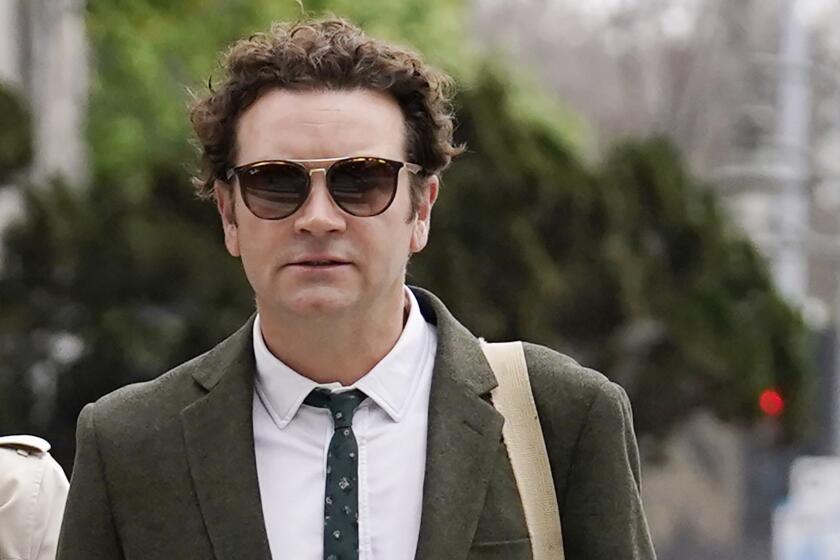Through the turnstile and onto the train
Some Los Angeles subway riders are about to lose their ability to simply hop aboard without buying a ticket.
The county Metropolitan Transportation Authority is taking steps this month to erase its distinction as the only major transit agency in the United States that doesn’t equip its stations with turnstiles and security barriers.
For decades, the MTA has used a gate-free honor system in which passengers walk unimpeded to train platforms without verifying that they have a ticket. To catch fare cheaters, the agency has relied on random checks by civilian inspectors and sheriff’s deputies. But the fine for lacking a ticket -- up to $250 -- still hasn’t deterred some riders from taking their chances. Cheaters cost the system at least $5 million a year in lost revenue.
Now, eight turnstiles are in use on a trial basis at the Alameda Street portal for the Red Line stop in Union Station, and five are operating at the Wilshire-Normandie station. By the end of the month, 12 turnstiles are scheduled to be installed at the Pershing Square station and 10 at Westlake-MacArthur Park.
MTA officials want to determine whether the gates improve security and clamp down on cheaters while moving thousands of daily riders quickly to and from trains.
If the system works well -- a progress report is due by the end of September -- the MTA will proceed with a $46-million plan to install 387 turnstiles and related security fences by early 2010 at all subway and Green Line light-rail stations and at selected stops for the Blue Line and Gold Line light-rail trains.
The MTA handles about 300,000 boardings a day on all of its rail systems, including 163,000 on the subway.
“I don’t mind them at all,” said Curtis Hill, 55, of Los Angeles, a regular transit rider who passed through the Union Station gates for the first time last week. “They make very little difference to me.”
MTA officials say the turnstiles and fencing are especially needed because of the threat of terrorism, the system’s increasing ridership and the emergence of the Transit Access Pass (TAP) program, an automated fare collection system that relies on smart cards issued to riders.
“Turnstiles have been discussed by our policy-makers for many years,” said Jane Matsumoto, a deputy executive officer at MTA who manages the TAP program. “In the past, we did not have the ridership or the coverage of service we do now. Proof of payment was much more manageable then.”
The turnstiles now accept TAP cards, which can be read electronically. The MTA and the Metrolink commuter rail service are developing one-way tickets, daily passes and Metrolink tickets that can be scanned by the new gates. Until then, riders must show those tickets and passes to MTA officials at the turnstiles before heading to train platforms.
At Union Station last week, subway passengers moved quickly through the four entrance turnstiles and four exit turnstiles, which include gates wide enough to accommodate strollers, bicycles and people in wheelchairs. Gaps between the banks of turnstiles were blocked with yellow-and-orange plastic barriers, which will be replaced with permanent fencing if the MTA proceeds with its plans.
Agency officials in yellow-and-orange vests provided assistance to riders, and purple banners on walls instructed passengers how to place their transit passes over the turnstiles’ sensors. Valid passes illuminate a green sign on the turnstiles instructing the rider to proceed, while invalid tickets trigger a red sign to stop.
“This is like New York City,” said Emilio Jimenez, 34, of Los Angeles, who found the new gates easy to use. “It’s a good idea. I think they will make the stations more safe.”
Occasionally, riders hesitate before reaching the gates, apparently unsure what to do. “Are these new?” one couple asked as MTA officials guided them through the gates.
“It’s a little more time-consuming than before,” said Joseph Morales, 34, of Sherman Oaks, who was traveling the Red Line with his son. “When it gets busy in here, people are going to back up” behind the turnstiles.
One of the things the MTA wants to determine is whether the gates will create significant bottlenecks during heavy travel times. Officials say the gates have been operating efficiently so far.
“This is precisely what we want to do: See how they work, find the anomalies and work out the bugs,” Matsumoto said. “The phasing in of the gates will be essential. Riders have used our stations for years in an unconstrained setting. Some of them have been confused about the new turnstiles. But once they see it, they get it.”
--
More to Read
Sign up for Essential California
The most important California stories and recommendations in your inbox every morning.
You may occasionally receive promotional content from the Los Angeles Times.











